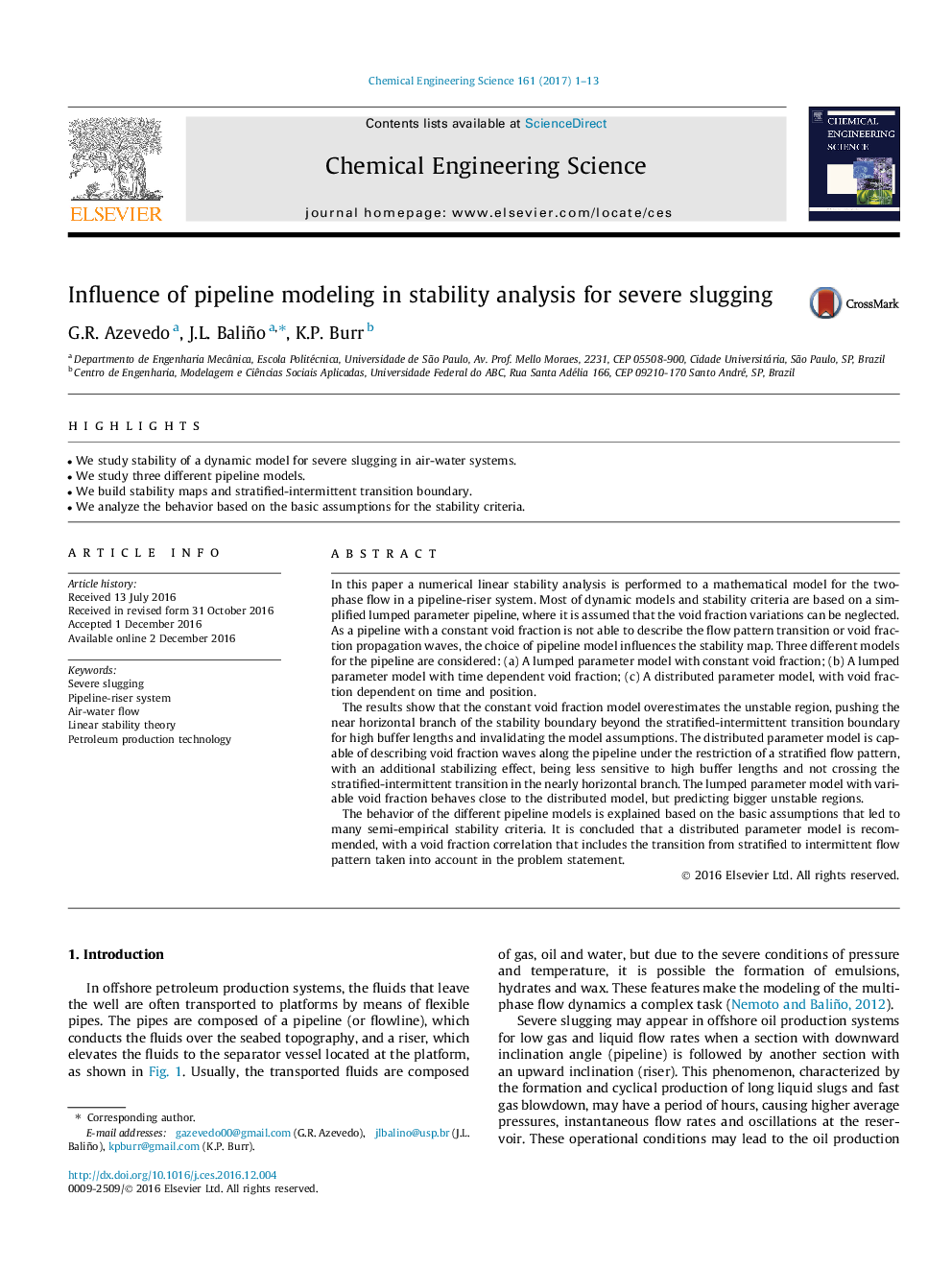| کد مقاله | کد نشریه | سال انتشار | مقاله انگلیسی | نسخه تمام متن |
|---|---|---|---|---|
| 6467530 | 1423258 | 2017 | 13 صفحه PDF | دانلود رایگان |
- We study stability of a dynamic model for severe slugging in air-water systems.
- We study three different pipeline models.
- We build stability maps and stratified-intermittent transition boundary.
- We analyze the behavior based on the basic assumptions for the stability criteria.
In this paper a numerical linear stability analysis is performed to a mathematical model for the two-phase flow in a pipeline-riser system. Most of dynamic models and stability criteria are based on a simplified lumped parameter pipeline, where it is assumed that the void fraction variations can be neglected. As a pipeline with a constant void fraction is not able to describe the flow pattern transition or void fraction propagation waves, the choice of pipeline model influences the stability map. Three different models for the pipeline are considered: (a) A lumped parameter model with constant void fraction; (b) A lumped parameter model with time dependent void fraction; (c) A distributed parameter model, with void fraction dependent on time and position.The results show that the constant void fraction model overestimates the unstable region, pushing the near horizontal branch of the stability boundary beyond the stratified-intermittent transition boundary for high buffer lengths and invalidating the model assumptions. The distributed parameter model is capable of describing void fraction waves along the pipeline under the restriction of a stratified flow pattern, with an additional stabilizing effect, being less sensitive to high buffer lengths and not crossing the stratified-intermittent transition in the nearly horizontal branch. The lumped parameter model with variable void fraction behaves close to the distributed model, but predicting bigger unstable regions.The behavior of the different pipeline models is explained based on the basic assumptions that led to many semi-empirical stability criteria. It is concluded that a distributed parameter model is recommended, with a void fraction correlation that includes the transition from stratified to intermittent flow pattern taken into account in the problem statement.
Journal: Chemical Engineering Science - Volume 161, 6 April 2017, Pages 1-13
